
“May you live to be 100, and may the last voice you hear be mine.” –Frank Sinatra
Although Frank isn’t able to celebrate his centennial with us, I can certainly argue that he lives on.
This man is the personification of vocal talent, so it’s no surprise to see him billed as “The Voice.” While it’s difficult to give form to a formless concept, I believe that this formless part of Frank is his very soul and legacy, still affecting us today. His voice can still warm a room when a glossy record whirls nearby and it can still light up any screen with its legendary presence. Frank Sinatra has been making the world swoon for generations, and I am neither the first nor the last person who has fallen in love with his immense body of work.
Francis Albert Sinatra was born in an upstairs tenement at 415 Monroe Street in Hoboken, New Jersey, on December 12th, 1915. His parents, Natalina “Dolly” Garaventa and Antonino Martino “Marty” Sinatra, were Italian immigrants, who eloped on Valentine’s Day of 1913, and married in a civil ceremony in Jersey City.
Sinatra was 13.5 pounds at birth, and had to be delivered with forceps, which scarred his cheek, neck, and ear, and perforated his eardrum. In fact, he was so injured that his baptism at the nearby St. Francis Church in Hoboken had to be delayed until the following year.
Dolly worked as a midwife for Italian Catholic women, earning $50 per delivery. She also had a knack for languages and worked as an interpreter for the locals. Marty was a boxer, who fought in Irish gyms under the name of Marty O’Brien. He also worked for the Hoboken Fire Department, achieving the rank of Captain. At the same time, Marty and Dolly maintained a tavern, and it is here that Sinatra spent much of his time working on homework assignments and singing songs atop the player piano for extra cash. During the Depression, Dolly would give Sinatra spare change to buy nice clothes and go on outings with his friends. Despite his lanky frame, Sinatra’s neighbors billed him as the best-dressed kid in the neighborhood.
As Sinatra grew, he developed a deep fondness for big band jazz, idolizing Bing Crosby. On his 15th birthday, Sinatra’s uncle gave him a ukulele, and Sinatra began performing at family gatherings.
Sinatra attended David E. Rue Jr. High School from 1928, A. J. Demarest High School in 1931. During high school, he arranged bands for the school dances. He left high school after 47 days, being expelled for “general rowdiness.” In an effort to please his mother, he attended the Drake Business School but also left after 11 months.
Sinatra receives an honorary engineering degree from his hometown college, the Stevens Institute of Technology, in 1985.
Dolly found a job for Sinatra as a delivery boy for the Jersey Observer newspaper, where his godfather worked. After that, Sinatra worked as a riveter at the Tietjen and Lang shipyard. All the while, he performed at local Hoboken social clubs, and for free on local radio stations. In New York, Sinatra sang for his supper or cigarettes. In order to improve his speech, he started taking elocution lessons for a dollar per month from vocal coach John Quinlan. It was Quinlan who was one of the first people to notice his impressive vocal range.
Sinatra started to sing professionally as a teen, with no formal training in music. He studied by ear, and never learned how to read music. His first break arrived in 1935, when his mother (clearly a driving force) persuaded a local singing group to let him join. Because Frank had a car, the 3 Flashes became the Hoboken Four, and Sinatra became the lead singer of the group. His fellow bandmates became jealous when they realized that Sinatra received all the attention from the girls.
In 1938, Sinatra worked as a singing waiter at a roadhouse in Englewood Cliffs, New Jersey. In 1939, Sinatra’s saxophone player friend, Frank Mane, arranged for him to audition and record “Our Love.” This would be Frank’s first solo studio recording. Sinatra eventually signed a two-year contract with the Harry James Orchestra, developing a solid repertoire of songs, but was still frustrated that he was not receiving the major acclaim he was seeking.
In 1939, Sinatra left Harry’s orchestra to replace Jack Leonard as the lead singer for the Tommy Dorsey band. Sinatra signed a contract with Dorsey for $125 per week at the Palmer House in Chicago, and James agreed amicably to release Sinatra from his contract.
On January 26, 1940, Sinatra made his first public appearance with the band at the Coronado Theatre in Rockford, Illinois, opening the show with “Stardust.” Dorsey recalled:
“You could almost feel the excitement coming up out of the crowds when the kid stood up to sing. Remember, he was no matinee idol. He was just a skinny kid with big ears. I used to stand there so amazed I’d almost forget to take my own solos.”
Dorsey became a father figure to Sinatra, copying his mannerisms, and never settling for anything less than perfection. He even adopted his hobby of collecting toy trains. He also made Dorsey the godfather of his daughter, Nancy, in 1940. Sinatra recalled: “The only two people I’ve ever been afraid of are my mother and Tommy Dorsey.”
In his first year with Dorsey, Sinatra released over forty songs. Dorsey pushed Sinatra to record more solo songs, and Frank was amazed at what he heard as his recordings were played back to him. This was a pivotal moment in his career, and he began to envision success on his own.
Sinatra harbored a desire to go solo and compete with Bing Crosby. However, his Dorsey contract stood in the way. The contract stated that Dorsey would get 43% of Sinatra’s lifetime earnings in the entertainment industry. After a legal battle, Dorsey bid farewell to Sinatra with an, “I hope you fall on your ass,” and replaced him with singer Dick Haymes.
During the World War II years, “Sinatramania” would be in full swing. The vast majority of Sinatra’s fans were bobby soxers, and Sinatra became known as “Swoonatra.” Thousands of Sinatra fan clubs sprang up across the United States, and Sinatra’s publicist encouraged interviews and photos with fans. When Sinatra opened at the Paramount Theatre in New York, Jack Benny recalled: “I thought the goddamned building was going to cave in. I never heard such a commotion… All this for a fellow I never heard of.” Bobby soxers were known to write Sinatra’s song titles on their clothing, bribe hotel maids for the chance to touch his bed, and would even try to steal a Sinatra bow tie.
Sinatra’s career continued to grow after his time singing with various big bands. In addition to radio and live performance, Sinatra took on various film roles for RKO and MGM, appearing in films like Anchors Aweigh (1945), Till the Clouds Roll By (1946), On the Town (1949), Take Me Out to the Ball Game (1949), and many others.
In High Society (1956) and on several other occasions, he was able to work with his idol, Bing Crosby.
After Sinatra experienced a slump, the Capitol Years brought us some of Sinatra’s greatest recordings, pairing his renowned voice with some of the most iconic song arrangements. Later, Sinatra would become an integral part of the legendary Rat Pack, thriving upon live performance in high-flying Las Vegas, and carousing with the likes of Dean Martin, Sammy Davis Jr., Joey Bishop, and an occasional Peter Lawford.
Sinatra’s life is incredibly well documented but today is special because it adds another chapter to Sinatra’s legacy. At the time of writing, today would have marked his 100th birthday and Sinatra is being celebrated all over the world.
Hoboken, New Jersey, is immeasurably proud of Sinatra on this particular day and is hosting many centennial events in honor of Sinatra. While cities are subject to change as time goes on, there are a few places that Sinatra would likely recognize.
First of all, I’m sorry to say that Sinatra’s original birthplace no longer stands. The former tenement is now a driveway. Nearby, there used to be a Frank Sinatra Museum, called “From Here to Eternity,” which closed, due to a lack of funding. It was this museum owner who paid for the plaque outside of Sinatra’s birthplace.
Luckily, there are three Sinatra homes in Hoboken, and the other two remain. One is situated on 841 Garden Street, and the other is on 703 Park Avenue.
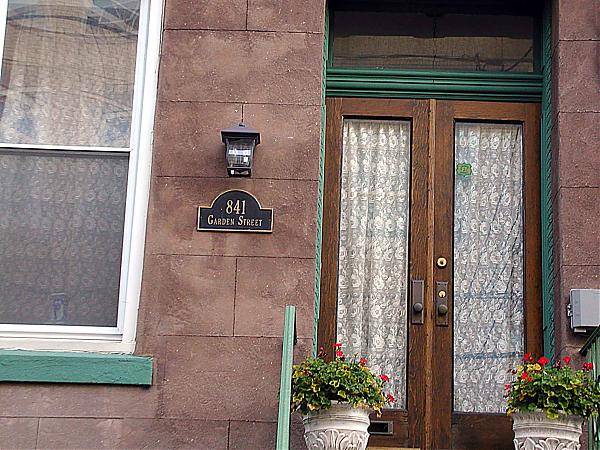
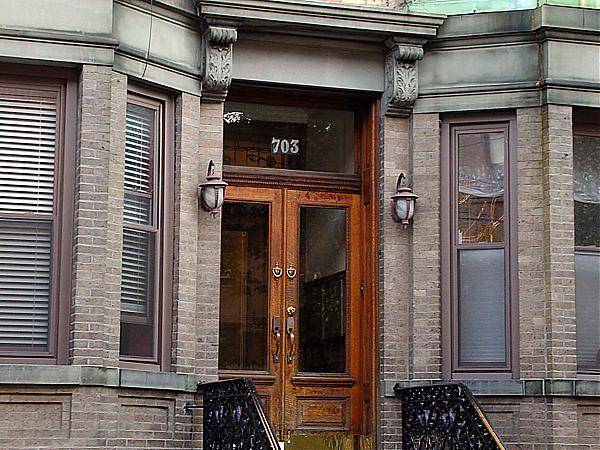
Frank Sinatra Park is another beautiful feature in Hoboken, which possesses a commemorative plaque. The portrait of Sinatra was stolen, so the plaque was recently replaced.
Though the Frank Sinatra Museum is no longer in operation, the Hoboken Historical Museum has stepped up to the plate with a tribute of its own. A brand new plaque is to be dedicated to Sinatra. The evening will be capped with a swing band, dancing, and six Sinatra tribute singers.
There are also other ways to celebrate Sinatra around the Hoboken area. The Historical Museum has its own Frank Sinatra walking tour if you want to fly solo in your Sinatra experience. Additionally, you can visit Old Blue Eyes Cafe, sip on a Sinatra Cocktail from Del Frisco’s Grille, or head over to Piccolo’s to take in the Sinatra-appreciating ambiance.
The Hoboken Public Library is hosting a Sinatra Movie Marathon all day long, while also housing the Sinatra: 100 photo exhibit. The exhibit features rare family photos and classic images from inside Sinatra’s Capitol and Reprise recording sessions, New Jersey’s Rustic Cabin roadhouse, Sinatra’s first singing group the Hoboken Four, the Tommy Dorsey Orchestra, and Sinatra as a boy in Hoboken. This exhibit is presented by the GRAMMY Museum in cooperation with the Sinatra Family and Frank Sinatra Enterprises.
Frank Sinatra’s memorial park offers a breathtaking view of Manhattan. One can easily visualize Frank’s own blue eyes gazing into the blue of the Hudson, or into his beloved New York, New York.
A statue of Sinatra is located in Sinatra Park at 340 Sinatra Dr., Hoboken, New Jersey.
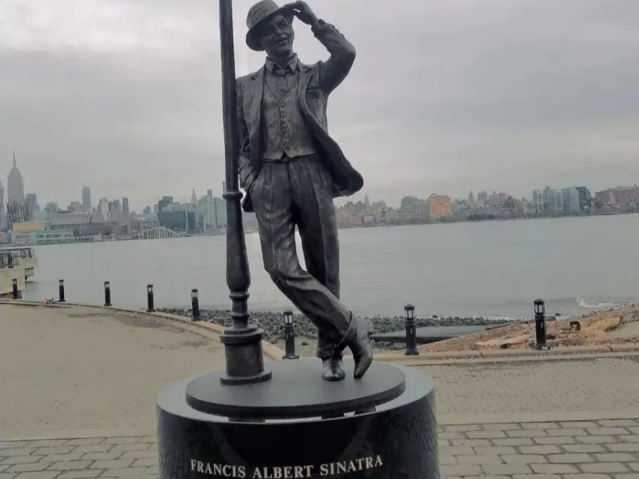
As of April 2022, the Garden State Parkway Service Area was renamed the Frank Sinatra Service Area. It is located at milepost, 41.4 Garden State Pkwy, Galloway, New Jersey.
New York has its own delightful sets of tribute events for Sinatra. One such example was housed at the New York Public Library, which featured an exhibit about Sinatra.
Since I am Chicago-based, I was especially thrilled to attend the prime Sinatra centennial event in the Chicago area. This event took place at the Palmer House in Chicago, honoring the time during which Sinatra cultivated his crooner persona as a member of the Dorsey band. The beloved Empire Room was dressed to the nines and reimagined to reflect how it would have looked in its supper club days. After a Sinatra-specific dinner that highlighted his favorite meals, attendees were treated to Chicago’s top-notch cabaret performers, paying homage to Sinatra’s vibrant career. All the while, a worn, brown fedora proudly sat on the piano, as performers described the ups and downs of Sinatra’s life. Once the cabaret performances were complete, guests were able to conclude the night with the City Lights Orchestra and some dancing to terrific big band tunes.
Since many talents graced the Palmer House’s Empire Room, history is alive and well at the Palmer House. Maurice Seymour’s portraits adorn the hotel walls, and you can easily spot Sinatra amidst the impressive lineup.
No matter where you are and whatever you do to honor Sinatra, make sure you have a great time. After all, that’s all that Sinatra would have wanted. And maybe, just maybe, have the last voice you hear tonight be Sinatra’s.
This article was added to the Sinatra Centennial Blogathon, hosted by The Vintage Cameo and Movie Classics Blog. To view more information about the Sinatra Centennial Blogathon or read additional entries submitted to it, please visit the Sinatra Centennial Blogathon page by clicking on the following banner.
Click here to learn more about booking Hometowns to Hollywood’s presentations on Frank Sinatra.
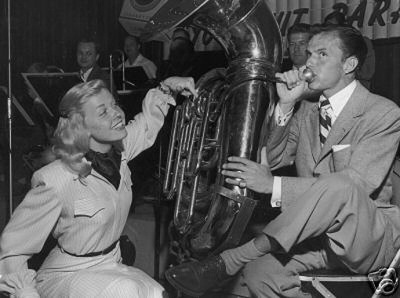












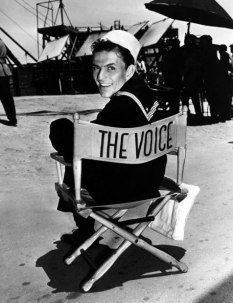

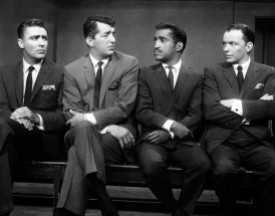





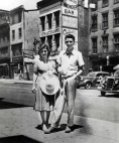













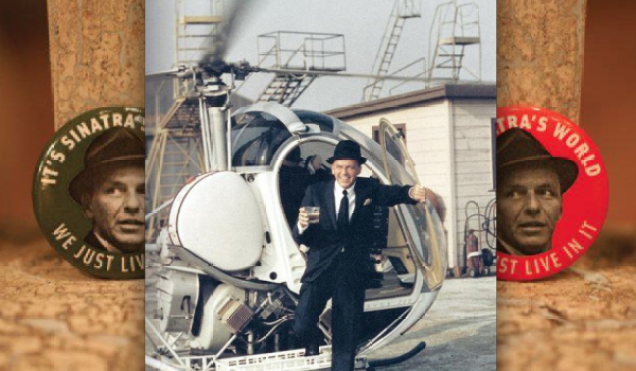





















Thanks so much for joining in the blogathon with this comprehensive posting – it was very interesting to learn more about Sinatra’s early days, his hometown and some of the events organised to mark his 100th. I hope you enjoyed the celebrations, and thanks again!
Thanks for stopping by, and for leaving the nice comment!
I meant to say that I love the picture of him getting his honorary degree, where he looks so happy.